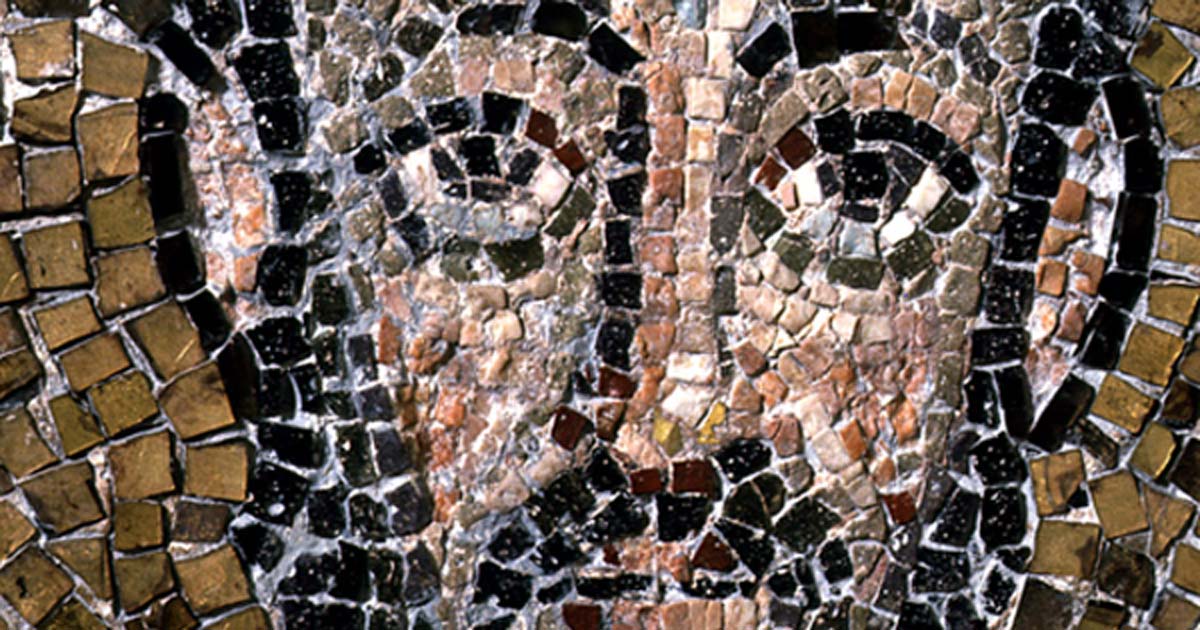Professional Art Detective Tracked Clues to Find Stolen Cypriot Mosaic
A ‘stolen art’ investigator, known in his field as “the Indiana Jones of the art world,” has successfully tracked down a precious sixth century mosaic that was stolen from Cyprus almost 50 years ago.
Dutchman Arthur Brand has one of those jobs that are generally seen only in movies; he’s an ‘art detective’, a sleuth dedicated to investigating cases of missing and stolen art. Speaking to reporters, Mr Brand said that he handed the Cypriot mosaic over to the Cypriot embassy in The Hague on Friday, and that, “Finding the 1,600-year-old piece in a flat in Monaco had felt very special.”

Looted mosaic from the Turkish occupied church of Panagia Kanakaria returns home (CNA - Maria Koniotou)
The artifact has been valued at between €5-10 million euros (£4.4-8.9 million) which you would imagine is a ‘once in a lifetime’ find, but not so for the amazing Mr Brand. It’s not the first time Mr Brand has been in the headlines for recovering stolen artwork and a BBC article in 2015 told the story of his recovery of “Hitler's Horses - two bronze Nazi statues” that once stood in front of Adolf Hitler's grand chancellery building in Berlin. A Telegraph article at the time said, “Police in five states conducted raids during more than a year-long investigation into illegal art trafficking,” all instigated with evidence provided by Mr Brand.

“Striding Horse” by Josef Thorak, Gemany. (CC BY-SA 4.0)
This time, Mr Brand has located a Byzantine depiction of Saint Mark that had been “stolen in the 1970s from Panayia Kanakaria church, about 105km (65 miles) north-east of the Cypriot capital, Nicosia.” The article in The Telegraph says, “Mr Brand spent nearly two years chasing the work across Europe, finally tracking it down in the possession of a British family” who had bought the art work “in good faith more than four decades ago.” “They were horrified when they found out that it was in fact a priceless art treasure, looted from the Kanakaria church after the Turkish invasion,” Mr Brand said.

Panagia Kanakaria church in Lythrangomi (Boltaşlı), Karpass Peninsula, Northern Cyprus. (CC BY-SA 3.0)
The Art Of Stealing Art
A BBC News article about Mr Brands latest art recovery says that in 2004, “two Edvard Munch masterpieces, The Scream and Madonna, were seized by armed men who raided the Munch museum in Oslo. Several men were jailed and the paintings later recovered after painstaking detective work in 2006.” And, in 1994, a version of The Scream was stolen from the National Art Museum in Oslo that was later recovered in “a sting operation by UK detectives.”
While all of these incidents of art theft are the same criminally, in financial terms there is no bigger art heist in history that what happened on 18 March 1990 when two police officers entered the Isabella Stewart Gardner Museum in Boston. The Guardian reported “they told security they were responding to a late-night disturbance and asked to be let in. The guard allowed the cops in through the employee entrance but got a surprise - they were in reality art thieves. After handcuffing the two guards, they stole 13 famous artworks by Rembrandt, Vermeer and Degas, walking away with art today valued at $500m.”
- South Africa’s National Gold Treasures Just Got Rarer
- Millions of silver coins may have been stored in Parthenon attic
- Tip-off leads Dublin Police to the Stolen Holy Heart of St Laurence
This remains the world’s biggest unsolved art heist and the museum are extending a $10m reward for information leading to the recovery of the art. Steve Kidder, who is president of the museum’s board, said “the museum doubled the reward and made it indefinite because they remain hopeful that the art will make a comeback.”
An article in Artsy titled What It Takes to Recover a Stolen Work of Art explains that “At its origins, art theft is primarily a crime of opportunity and simple burglary. The 1911 theft that rocketed the Mona Lisa (1503–19) to international fame involved a Louvre employee hiding in a closet overnight, then taking the painting off the wall when no one was around and walking out of the museum.” Furthermore, in 1994, two thieves broke into the National Gallery in Oslo, nabbing Munch’s Scream (two different versions of which have been stolen.) An alarm that went off was ignored by a guard, and the grateful criminals left a note stating, “Thanks for the poor security.”

The Scream by Edvard Munch, 1893 (CC BY 2.0)
While the majority of art is stolen by seasoned criminals, often working alone, many people conjure conspiracy theories, believing governments stage art heists and they are hidden in secret facilities to preserve them, out of the public eye. Those who support such conjectures argue that most of the paintings we see displayed in museums and art galleries are not the originals, but high quality replicas.
Conspiracy? Or acts of thievery? I will leave for you to decide.
Top image: St. Mark, Apse conch, Church of Panagia Kanakaria, Lythragkomi, Cyprus Source: © The Byzantine Institute and Dumbarton Oaks Fieldwork Records and Papers
By Ashley Cowie



















